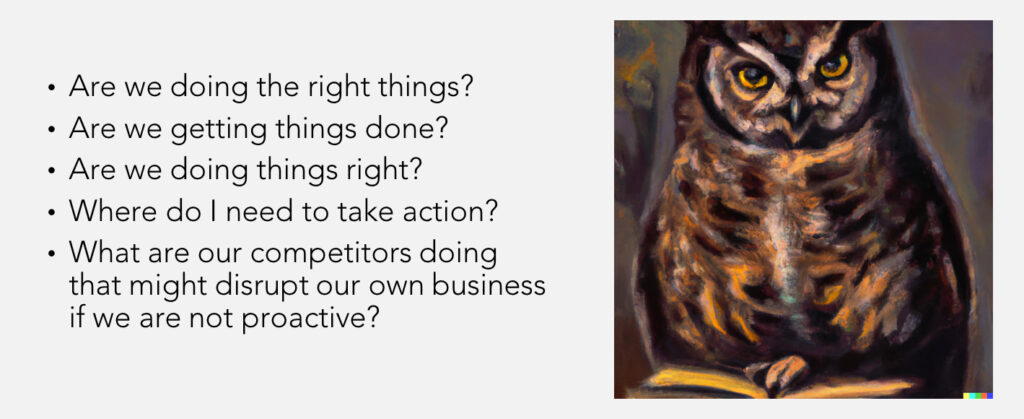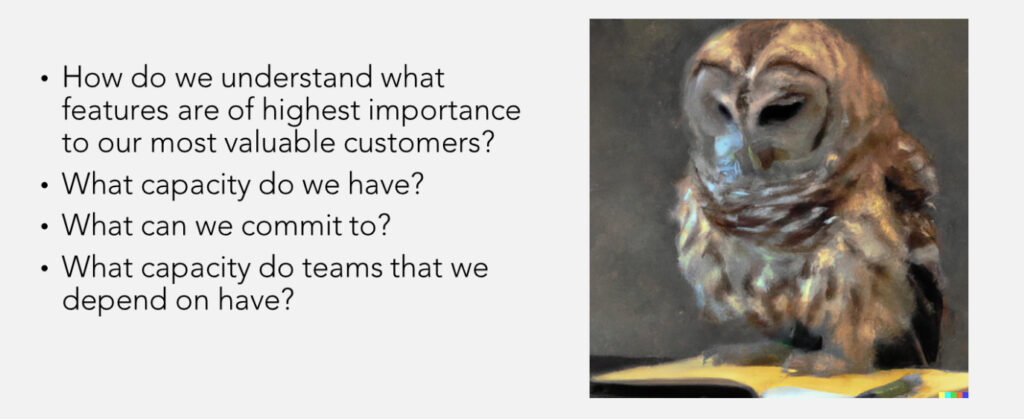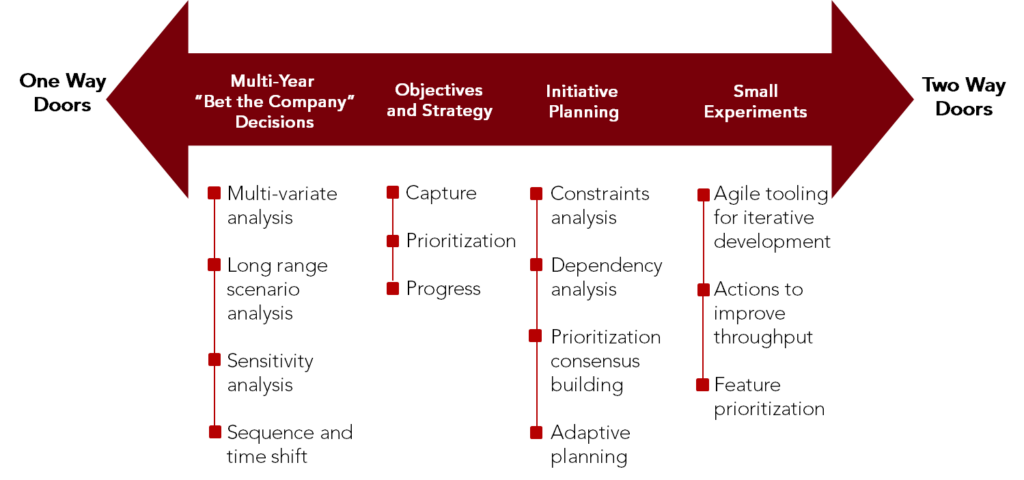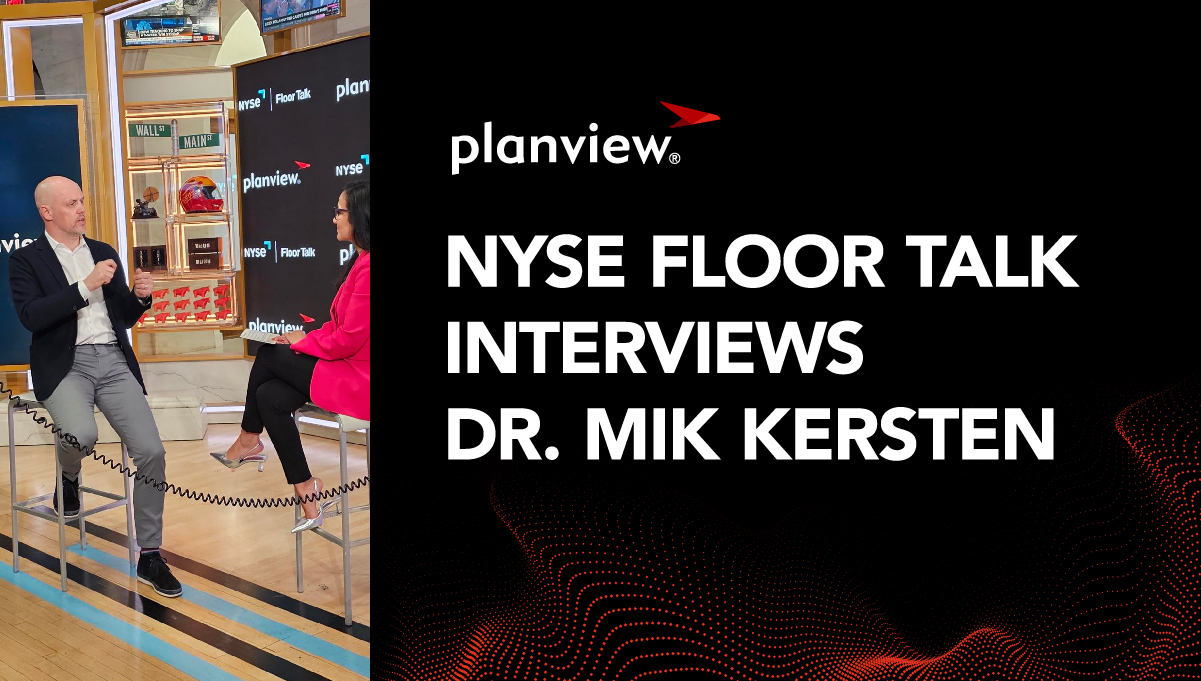
This is part two in a series of blogs on decision making in the era of financial constraints. Read part one here.
A pressing topic facing all executives right now is how to approach decision making in this era of growing financial constraints.
Executives express to us that their organizations are exercising long-unused decision-making muscles. In some cases, they are making cuts without sufficient information to understand the impact of those cuts.
In this post, Dr. Amisha Boucher and I explore three concepts to apply to your decision-making process to give it a competitive edge in today’s environment.
- Embrace data-driven, guided decision-making methods across the organization, not just at the executive level.
- Understand the common types of decision-making biases and how to spot them.
- Create a process and system supported decision making framework that provides for the continuum of decisions that organizations face.
Let’s dive in.
Scale Data-Driven, Guided Decision Making
Data-driven, guided decision making matters at every level of the organization. Here are three examples of how different roles can apply the same principles, using questions unique to their responsibilities within the organization.
For Executives
An executive needs data-driven, guided decision making to answer questions such as:

A recent example: Google search seemed invulnerable to market disruption eight months ago. In the face of OpenAI + Microsoft chatbot, they lost $230B in market cap in months. They responded with a limited release of Google Bard on March 21st, four months after the ChatGPT release. They were caught flat-footed by the release of ChatGPT and the threat to their business but were able to respond. The market has restored their market cap.
ChatGPT is akin to having 60 interns working for you. Their work needs to be checked, but they are an enormous accelerator.
The application of Large Language Models (LLMs) is exciting, and there are practical applications today. We think ease of access to sentiment analysis within internal documentation is transformative for improved executive decision making and have incorporated it into our solution. We see many executives yearning for a much more basic understanding of their organization and their market for decision making.
For Digital Team Members
A digital team member needs data-driven, guided decision making for questions of:

When they are supported with customer listening posts, and information on how their work connects to value for the company and enterprise capacity, our analysis shows 160% improvement in aligned work that ends up in the hands of customers due to a reduction of work that is wasted due to over capacity, misalignment with strategic objectives, or other bottlenecks. Engineers love to build and deliver value. Their engagement and satisfaction go up when the line of sight to value is cleared.
For Analysts
An analyst recommending a multi-year $100M+ investment in new product line needs data-driven, guided decision making to answer questions such as:
- What are the market assumptions for product sales forecast?
- What’s the optimal selling price that can be garnered?
- How cheaply can we manufacture it, and do we have the manufacturing capacity?
- What synergies does the new product have in the existing portfolio, whether boosting the sales of other products or cannibalizing them?
- From a portfolio perspective, which set of projects is going to maximize the chance of achieving strategic growth targets given the development and commercial risks and rewards?
For these decisions, we see analysts factoring in 26+ variables and running complex competing scenarios to determine the impact of shifting initiatives forward and back a quarter, potential regulatory changes, confidence in factors, risk adjustments, supply chain dependencies, and changing materials costs.
Unlocking analysts’ ability to run and compare multiple scenarios and replan based on internal and external factors over a multi-year period unlocks the creativity and curiosity of these analysts, which leads to much better decisions. Analyzing the products in a portfolio context by rapidly creating alternate portfolio scenarios and comparing them head-to-head leads to a more robust selection of projects that deliver on strategy.
Disrupt Decision-Making Bias
The psychology of decision making is complex. Decisions are not made in a vacuum. Cultural, process, and systems changes are needed for decision making to be a competitive advantage. Psychological safety has been well studied and written about because it eliminates people making fear-based decisions or, worse yet, failing to make decisions due to how the decision will make them appear.
Decisions are subject to various psychological biases, such as availability bias and recency bias. Why might earthquakes in Turkey cause Californians to buy earthquake insurance? That’s recency bias. More recent events tend to disproportionately impact our perception of risk.
What is the concern with estimating the probability of success or failure of a new project based on retrievable data? That is availability bias. The easily available data may not be representative and lead to skewed risk, cost, and reward estimates for the new project.
Other common pitfalls to watch out for are the sunk cost fallacy, which makes it difficult to end projects that have already had some investment, and the planning fallacy, which is the tendency to underestimate how long it will take to do something.
Companies need to have low-touch guardrails in place to safeguard against biases.
Both experts and non-experts can succumb to biases. One way to counteract them is to have visual cues that force the experts and decision makers to think about whether their thinking is succumbing to each of the common biases.
Driving decisions off of representative data can help mitigate things like the planning fallacy, but the key is ensuring the data itself is representative of reality. AI-based decisions are not exempt from these fallacies either, as the decision depends on the dataset and assumptions that are used.
Setting up small experiments, proof-of-concept, and prototypes where possible makes it easier to kill the project or initiative if it’s not yielding the right signals, thereby counteracting the sunk cost fallacy. It also lessens the clutch of fear in decision making because there is a way out.
When the decision has been made to proceed down a “one-way” door and seek FDA approval on a new hip joint, the ability to monitor the factors that went into the decision — and easily update scenarios to show impact — aid in killing off the initiative despite sunk costs, when the value will no longer be realized, or a better opportunity has arisen.
Invest in End-to-End Decision-Making Abilities
In this era of growing constraints, organizations are having to exercise muscles that have been unused for a decade. They find themselves needing to say no to good ideas, needing to determine where to trim without impacting their value stream, and how to adjust to rapidly changing customer buying patterns.
For high-quality, data-driven decisions, companies require support across the continuum of decisions.
There is a paradigm in decision-making science of “new frontier” decisions or “one-off” decisions for which the company has no mechanisms, culture, or process for decision making on this topic. They are very comfortable with “routine” or “seen before” decisions.
Leading organizations provide a framework for decision making for all levels of the company. When teams and individuals can make high-quality decisions on their own work at speed it has as significant an impact as executive decision making on the direction of the company. Strategy decisions and execution decisions are inseparable in their import for driving results.

Our pace of decision making is unprecedented and will not slow down.
We’ve all been through it with a global pandemic, changing immigration policies impacting the workforce, supply chain shortages, inflation, and exiting the world’s eleventh-largest economy (Russia) in weeks, followed by a regional banking meltdown in the US. We continue to see new entrants into markets prompted by disruptive technologies such as bringing analytics which was once the purview of data scientists to developers via higher-level services and pre-built industry models.
We see companies investing in their end-to-end decision-making ability at all levels of the company. The pace of change will only continue to accelerate. Employees at all levels need help operating in this environment. Organizations have limped along on spreadsheets, disconnected point solutions, and local optimization metrics that guide their decisions within their work and collaboration.
We often find they are simply not aware of how far an end-to-end solution that is designed for this environment can take them. We see a fast separation across the 12 industries that we work with where a subset of companies is rapidly taking market share over laggard competitors.
Those that transform the quality and speed of their decisions consistently outperform the others. Assisting companies in this transformation is what excites us.




